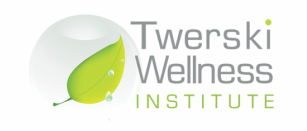| Over 2 years ago, I began a quest for happiness. I read, thought, wrote, spoke, and dreamt about happiness. With the support of the Baltimore Happiness Club, which I founded and coordinate, I worked through just about every major idea out there about how to be happy. Happiness is a cool topic these days, and lots of people have ideas about how to achieve it, from the mystical (Eckhart Tolle) to the psychological (Martin Seligman) to the religious (Rabbi Zelig Pliskin), and just about every stop in between. |
Along the way, I’ve used myself as a living laboratory, trying out techniques and doing whatever the various authors recommended to become happier (positive thinking, exercise, meditation, breathing, humor, diet, nature, self-awareness, mantra, complimenting others, you name it). As I discovered new approaches, I tried them out on myself and the long-suffering Happiness Club (is there an irony there?).
In short, all these approaches really do work to produce more happiness in everyday life. Rabbi Pliskin’s book “Gateway to Happiness” is a treasure, an encyclopedic overview of anything you can think of that will make a person happy. Jon Kabat-Zinn’s mindfulness practice is an excellent approach for combating anxiety and depression. The Dalai Lama’s “Art of Happiness,” based on both Tibetan Buddhism and modern research into the plasticity of the brain (yes, we can change the physical structure of our brains and it’s not even all that hard to do), is a beautiful primer on happiness written by one of the world’s happiest people. Mathieu Ricard, officially the World’s Happiest Person based on scans of his brain, tells us to meditate (the Tibetan way) to achieve real, lasting happiness.
They’re all right, but they’re all a bit short of the mark.
In short, all these approaches really do work to produce more happiness in everyday life. Rabbi Pliskin’s book “Gateway to Happiness” is a treasure, an encyclopedic overview of anything you can think of that will make a person happy. Jon Kabat-Zinn’s mindfulness practice is an excellent approach for combating anxiety and depression. The Dalai Lama’s “Art of Happiness,” based on both Tibetan Buddhism and modern research into the plasticity of the brain (yes, we can change the physical structure of our brains and it’s not even all that hard to do), is a beautiful primer on happiness written by one of the world’s happiest people. Mathieu Ricard, officially the World’s Happiest Person based on scans of his brain, tells us to meditate (the Tibetan way) to achieve real, lasting happiness.
They’re all right, but they’re all a bit short of the mark.


 RSS Feed
RSS Feed